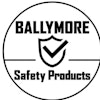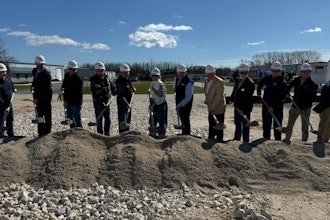Leaders in the workplace hear several complaints every day. Some are minor and easily resolved; others are more complex, requiring complicated solutions. Leaders should have a specific procedure or decision tree set up to guide them through the resolution process fairly and consistently.
Decision trees come in different varieties, some more suited to particular issues than others. One type can be quite logical, providing the leader with a rather intuitive model to follow for simple problems. Difficult problems, on the other hand, require more complex models that give leaders the more intricate guidance they require.
Unresolved complaints are symptomatic of underlying issues in the workplace. When left unsettled, these issues fester and ultimately surface as major problems that can impact productivity, efficiency and performance, as well as expose an organization to legal liabilities. Leaders must always strive to resolve a problem; otherwise, employees who continually complain about the same issue yet don't see action being taken likely have legal recourse. Even a seemingly minor issue can have potential legal ramifications that make the company liable for failing to address the complaint.
Effective leaders understand the importance of immediately addressing and resolving complaints. They know that lingering issues hinder the performance of their organizational unit by disrupting the harmony and balance required to maximize output. Additionally, the time invested in "nipping a problem in the bud" is well spent when compared with the time required to deal with a complaint that has exploded into a major problem. Good leaders furthermore understand that a quick and effective response to a complaint limits the company's legal liability.
Undoubtedly, leaders are well-versed in dealing with daily operational problems (e.g. production, quality, scheduling and efficiency) associated with the organizational unit's performance. And while it is possible these methods are effective at resolving related employee complaints, they are not the focus of this lesson. For present purposes, complaints will be limited to general workplace issues such as intimidation, harassment, bullying and other employee-related concerns.
When a complaint is initially brought to the leader's attention, he or she will most likely immediately classify it as a problem that is either major or minor. This tendency is natural, as quick classification leaves the leader with the necessary time and energy to identify and resolve the problem.
However, leaders must take care not to minimize a complaint. They need to recognize that it takes courage for an employee to voice a concern. In fact, before the complaint is made, quite often the issue has been going on for a sustained period, with the employee making many failed attempts at resolving it. Hence, it is important that the leader carefully consider the complaint's seriousness. Even if the individual tends to complain or whine about everything, each grievance should be examined on its own merits. If, after thoughtful consideration, the leader finds there isn't much to the complaint, then it may be dismissed. But a repeat pattern of similar complaints may require further action on the part of the leader. On the other hand, some employees rarely complain, and when they do the problem may be more serious than it initially appears.
Once the legitimacy of a complaint has been established, several steps must be taken. A decision tree, as outlined below, guides the leader to the ultimate solution.
Preliminary Investigation
A preliminary investigation identifies underlying causes, the individuals involved and impacted, and the extent of the problem. When the problems causing the complaint are rooted out early, potential solutions can also be identified right away. If this is the case, leaders can act quickly to resolve the problem and move on to more pressing issues. If not, leaders must move on to the next step.
Documentation
If the problem is bigger or more advanced than originally thought, then leaders must begin to document its extent--that is, the activities of the individuals causing the problem, and the complaints and actions of the employees affected by the problem.
Effective leaders understand the importance of documenting the problem: the process helps develop objective facts necessary for a satisfactory resolution and protects the company if the termination of employees is required.
Interview All Participants
An initial investigation of a complaint and a documentation of the facts should include personal interviews with everyone involved in the issue. This gives all parties ample opportunity to express their viewpoints. Leaders must take care to stick with the facts and not be biased by previous experiences with anybody or let their personal feelings impact their decisions.
Pinpoint the Causes and Solution
After interviewing all participants and listening carefully to what they had to say, leaders should be able to pinpoint the underlying causes of the problem. Sometimes the issue to be dealt with is obvious; in which case, immediate action is advised.
In more serious cases, leaders may need to consult with their superiors or the human resources professionals in their company to determine further action or attain recommendations. When issues of legal liability are involved in the solution, leaders must seek counsel from others more familiar with the issues. Effective leaders understand the limits of their responsibilities and the importance of calling on others with more expertise. When in doubt, it is best to call human resources to get their view on possible courses of action.
Implement the Solution
Depending upon the seriousness of the problem and who is involved in crafting and implementing the solution, leaders must take action as soon as possible. Clearly, the solution can take many forms and have a variety of actions. As a result, leaders will often have to sit down with the people affected, either individually or together as a group.
In these sessions the problem will be plainly laid out, the findings and extent of the problem will be reported, and a discussion of the possible solutions initiated. In certain cases where the problem is very serious, solutions can be presented without options, leaving the people who are causing the problem with clear instructions to cease their behaviors or face specific consequences. In other cases, the parties will discuss and agree upon a solution.
Once again, leaders aren't doing this alone: they are guided by the seriousness of the problem, instructions from their superiors, and the legal liabilities and ramifications if the issue is not resolved. Each area offers unique guidance that, along with understanding the particular circumstances surrounding the problem, will help leaders identify the final resolution and the actions they need to take.
Monitor the Solution
After a solution has been implemented, leaders should actively monitor the solution and periodically interview the employees affected to assure their satisfaction with the outcome. The leader's central purpose here is to ensure that the problem is completely resolved. If unresolved, then further action must be taken. Consequences may need to be revisited and more drastic action may be called for.
Leaders must understand that every complaint and problem is unique. Dealing with workplace issues means working with complex human behaviors that often have no simple or straightforward solutions. While some solutions are mandated by company policies or management direction, others require the leader's persistent application of logic until the problem is completely solved.
Excerpt: Negative Employee Attitudes: Pinpoint Management Skill Development Training Series (Majorium Business Press, 2011) $ 18.95 USD
Handling Workplace Complaints, Concerns and Issues
Leaders should have a specific procedure or decision tree set up to guide them through the resolution process fairly and consistently . . .
Apr 12, 2012
Latest in Home
Packer Fastener Expands to Kansas City
April 18, 2024
Fromm Announces New Services Division
April 18, 2024
Ballymore Safety Sold to PE Firm One Equity Partners
April 17, 2024






















